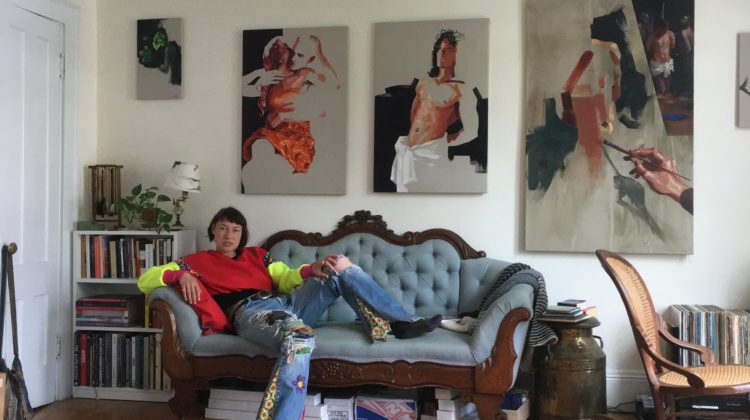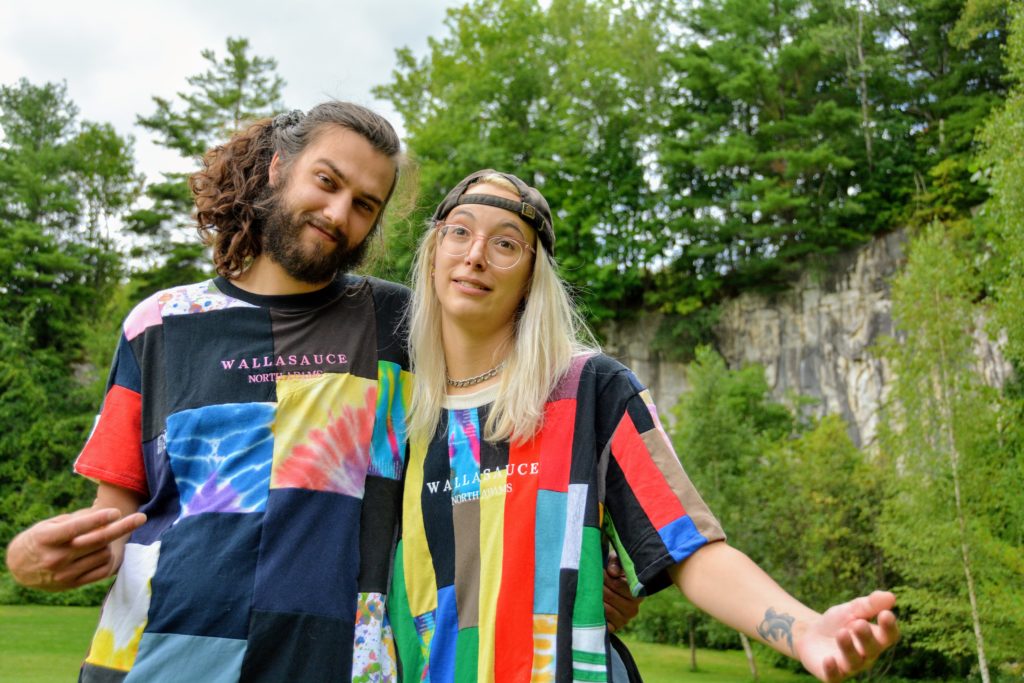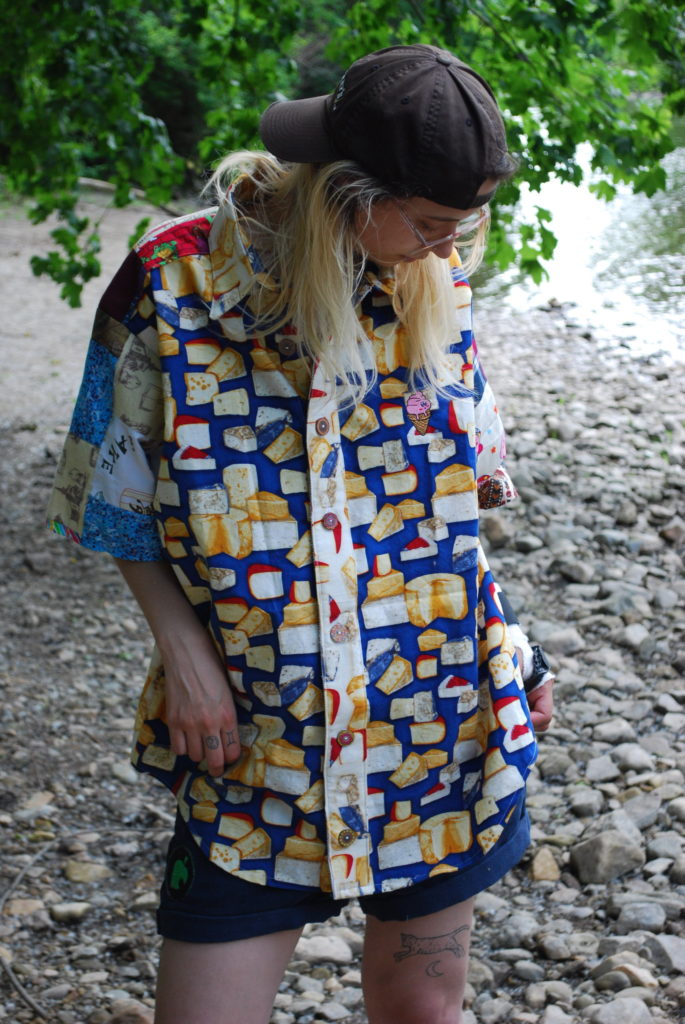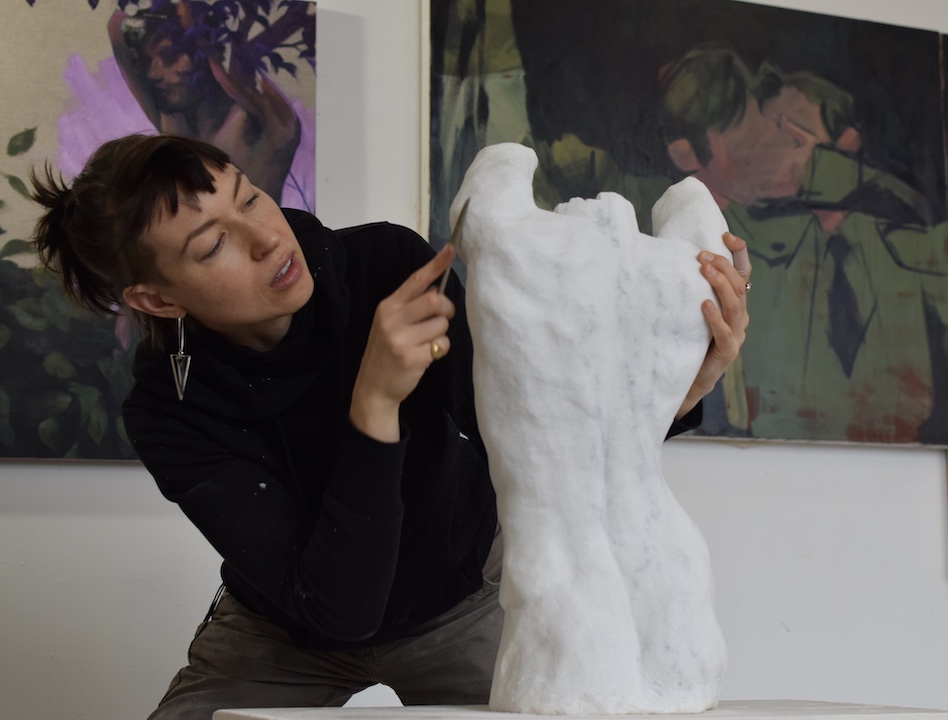
In 2019, the National Endowment for the Arts reported that artists were almost four times more likely to be self-employed as others in the labor force. Many of those 2.5 million artists also work a second job, or consider their artist work secondary to another job.
In 2020, the North Adams Artist Impact Coalition conducted its first artist census, collecting data from 213 artists from North Adams and the surrounding area. “What I saw through those numbers is pretty much everyone has some additional source of income,” said Molly Rideout, one of the community arts organizers who help run the Artist Impact Coalition. “Creative money ebbs and flows. There are busy seasons, and there are drought seasons.”
Only 9.2 percent of those artists reported that 100 percent of their income comes from their creative practice. A vast majority–78 percent–reported that their artistic work made up less than 20 percent of their income. Fourteen percent said they’re in their studio more than 30 hours a week, and half reported making $30,000 a year or less.
Rideout, who is fundraising and marketing manager at MASS MoCA’s Assets for Artists, is also a writer and bookmaker. She moved to the Berkshires from Iowa. “It’s easier to be an artist financially in this area than in the Midwest,” she said. “There are more consumers of art, and people who will pay for art of all disciplines. The Berkshires being a tourist destination allows for artists to thrive here in a way they couldn’t in other places.”
Assets for Artists worked with more than 1,000 artists through the pandemic, offering professional development, workshops, grants, business coaching, and other services. “Often the resource they’re asking for is how to do it full-time,” Rideout said. “It ends up not looking the way you think it will; often you’re doing a lot of odd jobs.”
Chalice Mitchell, a figurative painter who has exhibited internationally, does grant writing work for The Artist Book Foundation in North Adams and teaches painting at Community Access to the Arts in Great Barrington and the Southern Vermont Arts Center. In 2020, she received a Martha Boschen Porter Fund grant to carve marble sculptures that explore the human form, as well as an Artist Resource Trust Fund grant to create a body of work based on Titian’s poesie paintings. She does commission work as well, “but I consider that gravy,” she said. “I don’t personally know anyone who’s just making a living off their work…not long term.”
Mitchell works to max out a Roth IRA each year, and has another IRA that CATA contributes to. She said she lives cheaply, saving as much as she can in an emergency fund. She lives in a two-bedroom apartment and maintains a studio there, rather than paying for a separate space. She paid off her college loans by teaching English in Japan. She learned Japanese in the process, and loved the experience. “It really influenced me,” she said.
“It’s hard to carve out the mental space and time to dedicate it to the things I want to do in the studio,” she said. “I’d like to take more time in the studio but also I love teaching and I don’t want to stop. I like that I’m not constantly stressed about money when I’m painting. I want the work to be free financially, but I also want to have the time to do it.”
WallaSauce, conceived and run by Sarah DeFusco and Andrew “Kirby” Casteel, is a clothing company that focuses on handmade items created from upcycled and alternative materials. They make everything themselves from their studio at the Beaver Mill in North Adams, and are able to pay all their business expenses with revenue from sales. They had both been working at a screen printing and embroidery shop before the pandemic, but lost that work and pivoted to WallaSauce full time last year.

“We don’t want to work a 9-5, so now we work 24-7,” Casteel said. “That’s pretty much what our MO is right now, but it doesn’t really matter if we can just keep paying the bills.”
In 2020, DeFusco was part of the inaugural cohort of the Artists at Work program, which gave working artists $15,000 over six months to create work with a community organization as partner. DeFusco and Casteel worked with MASS MoCA and offered a series of workshops teaching people to sew, both in-person and virtually.
DeFusco also just started a new business called Salvage, tailoring secondhand items and making sustainable home goods like dust cloths and coffee filters.
Online sales via the WallaSauce website and social media are a major source of revenue, but the pair wishes they could table at more in-person events or open their own storefront space. “Our business is very, very personal,” said DeFusco. “What would make the most sense would be for us to have our own space.”

WallaSauce also sells items in different independent storefronts, but “we want to be selective,” DeFusco said. “It would be ideal to have a space and we could put all our 24/7 effort into that.” They’ve applied for a grant to support that idea.
Though bills and rent are covered, Mitchell, DeFusco, and Casteel all confirmed that it’s still hard to make everything work.
“It’s hard to be advertising—we don’t even know when to post stuff that people are going to actually see,” DeFusco said. “It’s frustrating when you know you have all the resources and everything to do the job, but the money’s not there.”
“I feel like when I left art school, I was under the impression you’re going to be making art full-time fresh out of undergrad, which wasn’t going to happen,” Mitchell said. “I felt like a failure for a lot of my 20s and 30s because I had to do another job before I started to realize, wait, this might be a different issue. There are people who do get to just make paintings, just go to gallery openings, just make those connections, of course they’re moving faster.”

In its grant process, Assets for Artists asks for information about income. “We’re still figuring out how to get a sense of that,” Rideout said. “Someone who might appear cash poor may have a lot more than someone who has a lot of money in the bank.”
When it comes to making art full-time, “It often comes down to financial privilege,” Rideout said. “If you’re able to do that, chances are you’re coming from some level of financial help that allowed you to be there, or you’re really lucky.”
